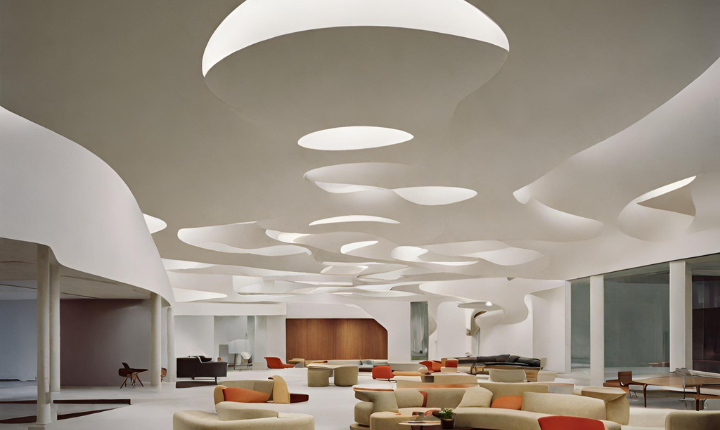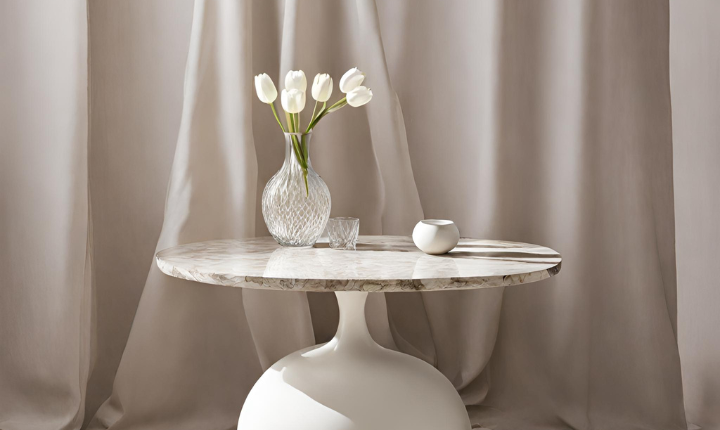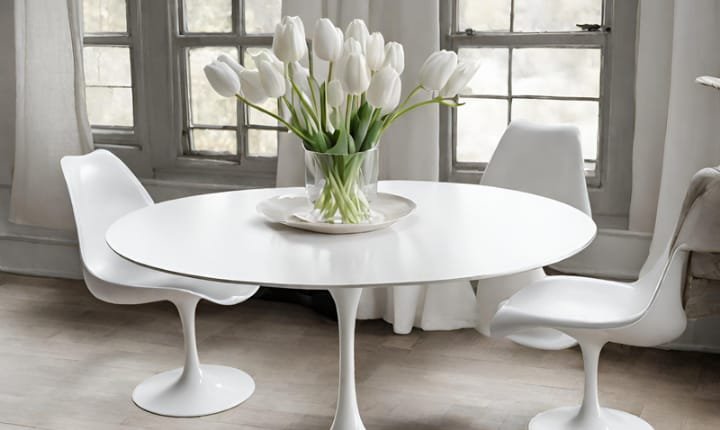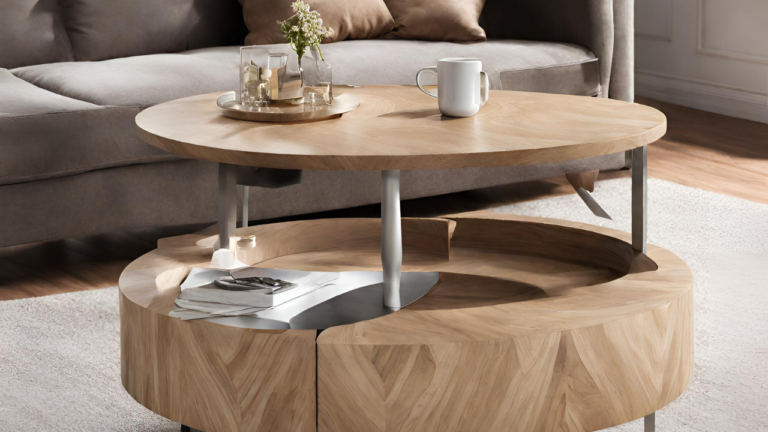Artistry and Innovation in Furniture Design
Our story begins with the creative genius behind the Tulip Table, Eero Saarinen. Born in 1910, Saarinen became a luminary in the realm of mid-century modern design, challenging conventional norms and introducing groundbreaking concepts. His vision was not just about creating furniture; it was about sculpting functional art that transcended the boundaries of time and…
Our story begins with the creative genius behind the Tulip Table, Eero Saarinen. Born in 1910, Saarinen became a luminary in the realm of mid-century modern design, challenging conventional norms and introducing groundbreaking concepts. His vision was not just about creating furniture; it was about sculpting functional art that transcended the boundaries of time and style.
The Birth of an Icon: Eero Saarinen’s Visionary Design

Eero Saarinen: A Pioneer in Modern Furniture Design
Let’s start by acknowledging the creative genius behind the Tulip Table – Eero Saarinen. A Finnish-American architect and designer, Saarinen played a pivotal role in shaping the landscape of modern furniture. Born in 1910, he emerged as a key figure in the mid-century design movement, challenging conventional norms and infusing a sense of innovation into his creations.
The Concept Behind the Tulip Table
At the heart of the Tulip Table’s appeal is its groundbreaking design concept. Saarinen sought to eliminate the “slum of legs” that traditional tables presented, opting instead for a single pedestal base. This departure from convention not only gave birth to a visually striking piece but also addressed practical concerns, creating a sense of openness and fluidity in the surrounding space.
Exploring the Aesthetic Charms: Artistry in the Tulip Table

Artistic Elements of the Tulip Table
The Tulip Table is not merely a functional piece; it is a work of art that adds a touch of elegance to any space. The simplicity of its form, characterized by a sleek pedestal and a gracefully curved top, exudes sophistication. Saarinen’s commitment to minimalism and clean lines is evident in every inch of this masterpiece, making it a versatile addition to various design schemes.
Timeless Design Language
One of the key reasons behind the enduring popularity of the Tulip Table is its timeless design language. Unlike trend-centric furniture that may lose relevance over time, the Tulip Table transcends style epochs. Its minimalist aesthetic and classic silhouette ensure that it seamlessly integrates into both contemporary and traditional interiors, making it a timeless investment for homeowners with an eye for enduring design.
From Sketch to Reality: The Innovation of the Tulip Table
Innovative Materials and Construction
Saarinen’s commitment to innovation extended beyond aesthetics to the materials and construction of the Tulip Table. The base, often molded from cast aluminum, provides stability while maintaining a light and airy feel. The tabletop, available in various materials such as marble or laminate, adds a luxurious touch. This innovative use of materials was groundbreaking in its time and continues to inspire furniture designers today.
Space-Saving Solutions
In a world where living spaces are increasingly compact, the Tulip Table’s design is a breath of fresh air. The single pedestal not only contributes to its visual appeal but also serves a functional purpose. With no legs to navigate around, the Tulip Table maximizes seating capacity, making it an ideal choice for those who value both form and function in their furniture.
Tulip Table for Sale: Bringing Innovation Home
The Modern Furniture Marketplace
As the demand for modern and innovative furniture grows, the Tulip Table has found its place in the thriving marketplace of modern furniture. Numerous retailers and online platforms offer the Tulip Table for sale, providing consumers with the opportunity to bring a piece of design history into their homes.
Finding Your Perfect Tulip Table
When shopping for a Tulip Table, consider the available variations in materials, sizes, and finishes. Whether you opt for the classic marble top or a more contemporary laminate finish, the Tulip Table allows for customization to suit your personal style and the aesthetic of your living space.
Pros
1. Iconic Design:
The Tulip Table boasts a timeless and iconic design, making it a visually striking centerpiece in any room. Its sculptural form and clean lines contribute to its enduring popularity.
2. Versatility:
With various material options for the tabletop and a range of finishes, the Tulip Table is highly versatile. This versatility allows it to seamlessly integrate into diverse interior design styles.
3. Space-Saving:
The single pedestal design of the Tulip Table eliminates the need for traditional legs, maximizing seating capacity and making it an ideal choice for smaller living spaces.
Cons
1. High Price Tag:
One of the notable drawbacks of the Tulip Table is its relatively high price compared to conventional dining tables. The iconic design and quality materials contribute to its cost, making it a significant investment.
2. Susceptible to Scratches:
Depending on the chosen tabletop material, the Tulip Table may be susceptible to scratches. While marble exudes luxury, it requires careful handling to prevent damage to its surface.
3. Limited Seating Space:
The single pedestal design, while space-saving, can limit legroom for those sitting around the table. This may be a consideration for individuals who prioritize maximum comfort during dining or gatherings.
(FAQs)
Q. What is a Tulip Table?
- A: A Tulip Table is a distinctive piece of furniture designed by Eero Saarinen in the mid-20th century. Known for its iconic single pedestal base and smooth, rounded top, the Tulip Table is celebrated for its minimalist and timeless design.
Q. Who is Eero Saarinen?
- A: Eero Saarinen was a Finnish-American architect and designer born in 1910. He gained prominence as a leading figure in mid-century modern design and is renowned for creating iconic furniture pieces, including the Tulip Table.
Q. What materials are used in the construction of Tulip Tables?
- A: Tulip Tables typically feature a cast aluminum pedestal base for stability and a variety of materials for the tabletop. Common tabletop materials include marble, laminate, and wood veneer, each offering a different aesthetic and feel.
Q. Are Tulip Tables suitable for small spaces?
- A: Yes, Tulip Tables are well-suited for small spaces due to their space-saving design. The absence of traditional legs creates a more open and uncluttered look, making them ideal for compact living areas.
Q. Can I customize the Tulip Table to match my decor?
- A: While the overall design of the Tulip Table is consistent, there are customization options available. You can choose from different tabletop materials, finishes, and sizes to align with your personal style and home decor.
Conclusion
The Tulip Table, with its combination of iconic design and innovative construction, presents a compelling option for those seeking a statement piece in their homes. While its pros, including versatility and space-saving features, contribute to its widespread appeal, potential cons such as a high price tag and susceptibility to scratches should be carefully considered.






